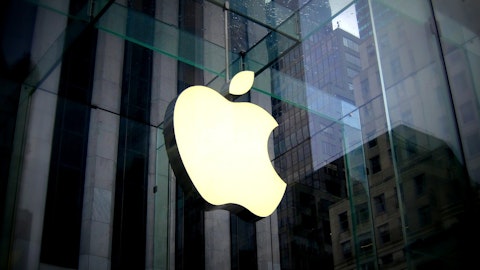Gaming and Leisure Properties Inc (NASDAQ:GLPI) is a $6.9 billion REIT that leases out real estate property to gaming operators in triple net lease arrangements. The company was spun-off from Penn National Gaming, Inc (NASDAQ:PENN) in November 2013 and owned the real estate associated with 21 facilities at the end of March 2016, 18 of which were leased to Penn National. Gaming and Leisure Properties Inc (NASDAQ:GLPI) later added 14 more facilities to its portfolio by acquiring the real estate assets of another gaming company, Pinnacle Entertainment.
In this article, we’ll find out why many the smart money funds in our database are long Gaming and Leisure Properties for its dividend.
Through extensive research, we determined that imitating some of the picks of hedge funds and other institutional investors can help generate market-beating returns over the long run. The key is to focus on the small-cap picks of these investors, since they are usually less followed by the broader market and are less price-efficient. Our backtests that covered the period between 1999 and 2012, showed that following the 15 most popular small-caps among hedge funds can help a retail investor beat the market by an average of 95 basis points per month (see the details here).

Many investors view Gaming and Leisure Properties’ income from its facilities as very stable. Not only do Gaming and Leisure Properties’ facility leases with its customers run for 35 years, but Penn National and Pinnacle also don’t have much credit risk. In 2015, Penn and Pinnacle had an EBITDA-to-rent ratio of 1.77 and 1.68 respectively. In addition, Gaming and Leisure Properties itself isn’t very leveraged. Due to its strong cash flow stream and a $400 million at-the-market continuous equity offering that began August 9, Gaming and Leisure Properties is on track to lower its leverage ratio to around 5.3-times by the end of the year.
Follow Gaming & Leisure Properties Inc. (NASDAQ:GLPI)
Follow Gaming & Leisure Properties Inc. (NASDAQ:GLPI)
Receive real-time insider trading and news alerts
The collection of top hedge funds in our system that are long Gaming and Leisure Properties like its management’s strategy of acquiring additional gaming facilities to lease to gaming operators. Gaming and Leisure Properties’ low cost of capital and tax advantages save gaming operators money and the added facilities accretively increase Gaming and Leisure Properties’ AFFO and lowers its single-tenant risk it has with Penn National. Because of Gaming and Leisure Properties’ win-win strategy, the company has managed to grow its quarterly dividend from $0.52 per share in 2014 to $0.60 per share in 2016.
Follow Penn Entertainment Inc. (NASDAQ:PENN)
Follow Penn Entertainment Inc. (NASDAQ:PENN)
Receive real-time insider trading and news alerts
On August 9, Gaming and Leisure Properties reported strong results for its second quarter, generating an AFFO of $96.9 million versus the company’s previous guidance of $93.3 million. Adjusted EBITDA was $180.4 million, slightly higher than the previous guidance of $180.3 million, and substantially higher than last year’s $108.6 million. Because the Pinnacle acquisition increased Gaming and Leisure Properties’ cash flow, management raised its quarterly dividend to $0.60 per share from $0.56 per share. At its current price, the quarterly dividend gives Gaming and Leisure Properties a forward yield of over 6.5%.
Given the stability of Gaming and Leisure Properties’ income streams, the M&A growth opportunities ahead, and the stock’s attractive dividend yield, many top funds feel Gaming and Leisure Properties is one of the best dividend investments on the market today.
On the next page, we’ll analyze hedge fund movement in Gaming and Leisure Properties during the second quarter.
In terms of overall hedge fund activity, 40 funds in our system owned $1.01 billion worth of Gaming and Leisure Properties Inc (NASDAQ:GLPI) shares on June 30, which accounted for 20.00% of the float, which was notably down from 59 funds with $1.32 billion in holdings on March 31. The numbers for the current quarter are from 749 funds that Insider Monkey tracks which filed 13F’s for the June 30 reporting period. It should be noted that the total number of 13F-filing hedge funds fell from 766 quarter-over-quarter.
In terms of individual smart money activity, Richard Driehaus‘ Driehaus Capital more than doubled its stake in Gaming and Leisure Properties during the second quarter, to 5.13 million shares at the end of June. Those 5.13 million shares accounted for 6.31% of the value of the fund’s portfolio at that time. Sharing its optimism was Jim Simons‘ Renaissance Technologies, which also raised its stake in the stock, in this case by 93% to just under 1.7 million shares. Due to Renaissance Technologies’ size, the stock only accounted for 0.11% of the quant fund’s equity portfolio at the end of the second quarter.
Disclosure: None





